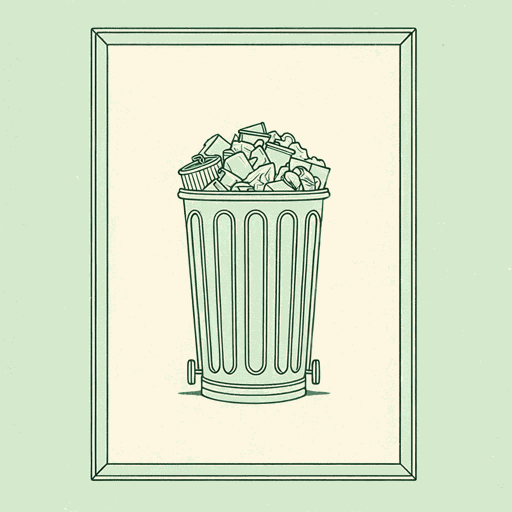38 pages • 1 hour read
Annie LeonardThe Story of Stuff: How Our Obsession with Stuff is Trashing the Planet, Our Communities, and Our Health—and a Vision for Change
Nonfiction | Book | Adult | Published in 2010A modern alternative to SparkNotes and CliffsNotes, SuperSummary offers high-quality Study Guides with detailed chapter summaries and analysis of major themes, characters, and more.
Summary and Study Guide
Overview
The Story of Stuff: How Our Obsession with Stuff is Trashing the Planet, Our Communities, and Our Health—and a Vision for Change (2010) is a book by Annie Leonard. It is based on a short animated documentary with the same title (2007) written and narrated by Leonard. Leonard criticizes American consumer society that values novelty, accumulation, and low prices for being unsustainable. Overconsumption affects our health, our happiness, and our planet. Leonard travels from factories, to waste landfills, to mines to show the human and environmental costs of Stuff. She concludes that because the resources on our planet are finite, the environmental costs of consumption are unsustainable. To save our planet, we need a new way of understanding the world: We need to consume less.
The Story of Stuff approaches the materials economy, or modern manufacturing ecosystem, through the framework of systems thinking. Systems thinking proposes that things can’t be considered in isolation; everything is connected. She divides the materials economy into five components: extraction, production, distribution, consumption, and disposal. In each section, she shows how each segment relates to the others. Leonard explains how each stage of production is guided by corporate interest, consumer demands, and the paradigms that shape our worldviews. Leonard considers how environmental damage, racism, and globalization connect. The introduction and conclusion analyze our current economic, political, and environmental systems and propose alternatives that would allow for justice, equity, and environmental sustainability.
Statistical data, firsthand observations, and personal anecdotes supplement her analysis. For example, individual Americans throw away over four pounds of garbage per day. Our municipal systems process more than 240 million tons of waste per year. Modern methods of destroying garbage by burning it create the compound dioxin, which is one of the most dangerous and climate-affecting substances known to man. Leonard begins this analysis of garbage by describing a visit to the Fresh Kills Landfill on Staten Island.
Consumerism is a paradigm that influences how people act and what they desire. The average American is bombarded with advertising that promotes consumption and has access to affordable consumer goods. We have been taught that consumption is inevitable, necessary for economic growth, and will bring personal or spiritual fulfilment. The expanded global economy rooted in capitalism as a worldview has normalized overconsumption. Leonard concludes that our current economic system and overconsumption must change. We need to consume less and value things more. Leonard suggests change must happen on individual, corporate, and government levels. Together, systemic change that produces an equitable, sustainable world is possible.

